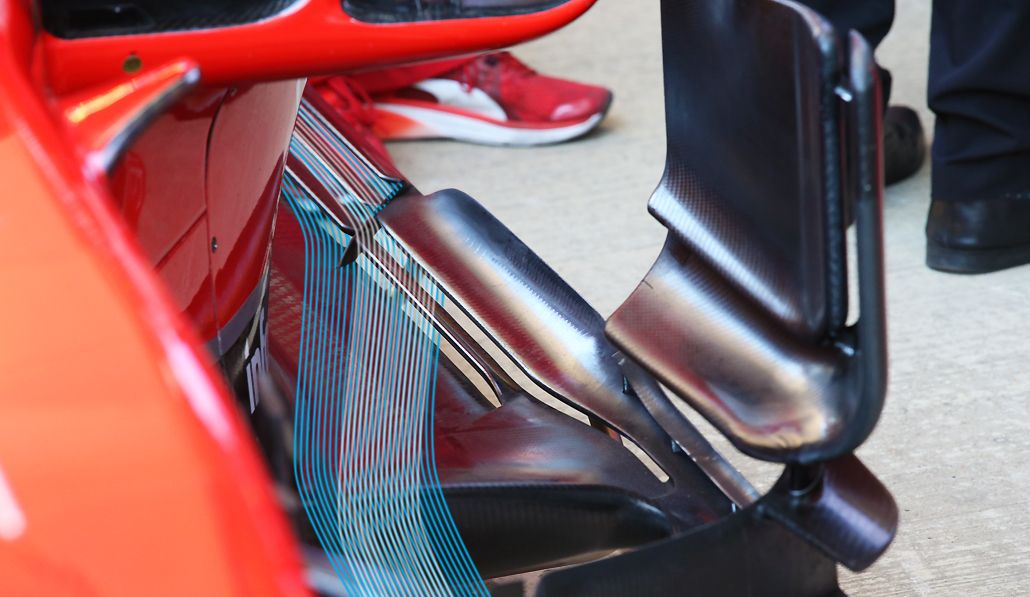MARANELLO’S RESPONSE
The development race is on between the two teams fighting for the Formula 1 world titles. In Silverstone, the Scuderia has responded to the aerodynamic evolution brought by Mercedes a week earlier in Austria with significant modifications to its SF71-H.
The outer edges of the floor of the Ferrari have been remodelled (they had already been in Spain). The old version had two longitudinal slits (marked in yellow below) and was divided into two sections by a strake intended to limit the flexibility of the floor in this area (see the white arrows). On the model presented in Great Britain, the edges of the floor have between two and three slits, and are divided in three portions.
By increasing the power of the vortices within the outer section of the underfloor, these slits serve to isolate the air flowing under the car so the diffuser can work more efficiently. How do they do this?

© F1i
SEALING THE DIFFUSER
As is well known, wheel rotation disrupts the aerodynamic operation of a car: this phenomenon is known as “tyre squirt”. At the rear of the car, the turbulent and low-energy flow of the tyre squirt penetrates, at the sides, into the diffuser and hinders its work. The phenomenon is even more penalizing since the car set-up is pitched forward. In addition, the ambient air – high pressure – tries to rush under the floor, attracted by the depression that is created there.
To contain this double intrusion, the aerodynamicists had the idea to try various cuts in the floor: either notches just in front of the rear wheels, or incisions parallel to the edge of the floor. The rationale is the same as with the floor slots ahead of the rear wheels, i.e. to allow high-pressure air above the floor to go under the car in order to seal the edges of the diffuser.
How does it work? The encounter between low-pressure and high-pressure air generates vortices that act as a wall (like the skirts on the wing cars) to protect the diffuser from the dirty wake of the rotating rear tyres.
Sealing the diffuser’s edges is all the more important this year with teams running higher rake angle on their 2018-spec cars, which is especially true of the SF71H.

 '
'




